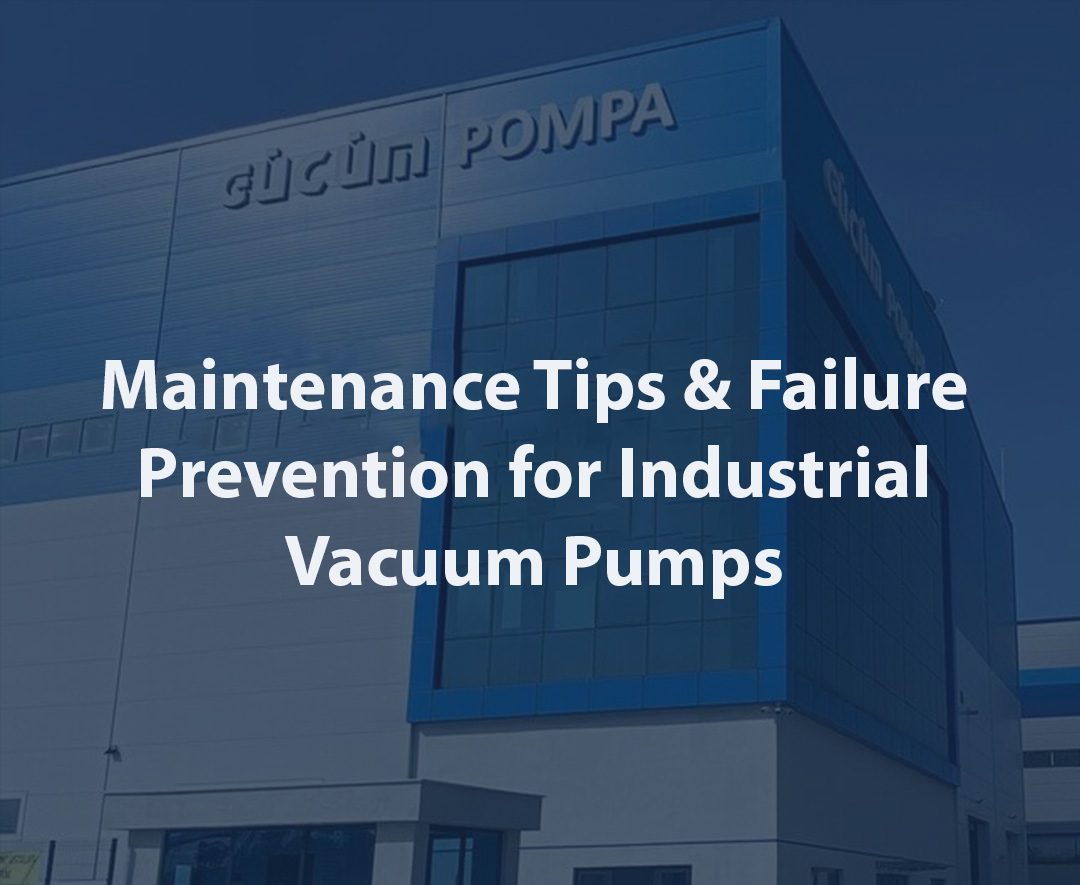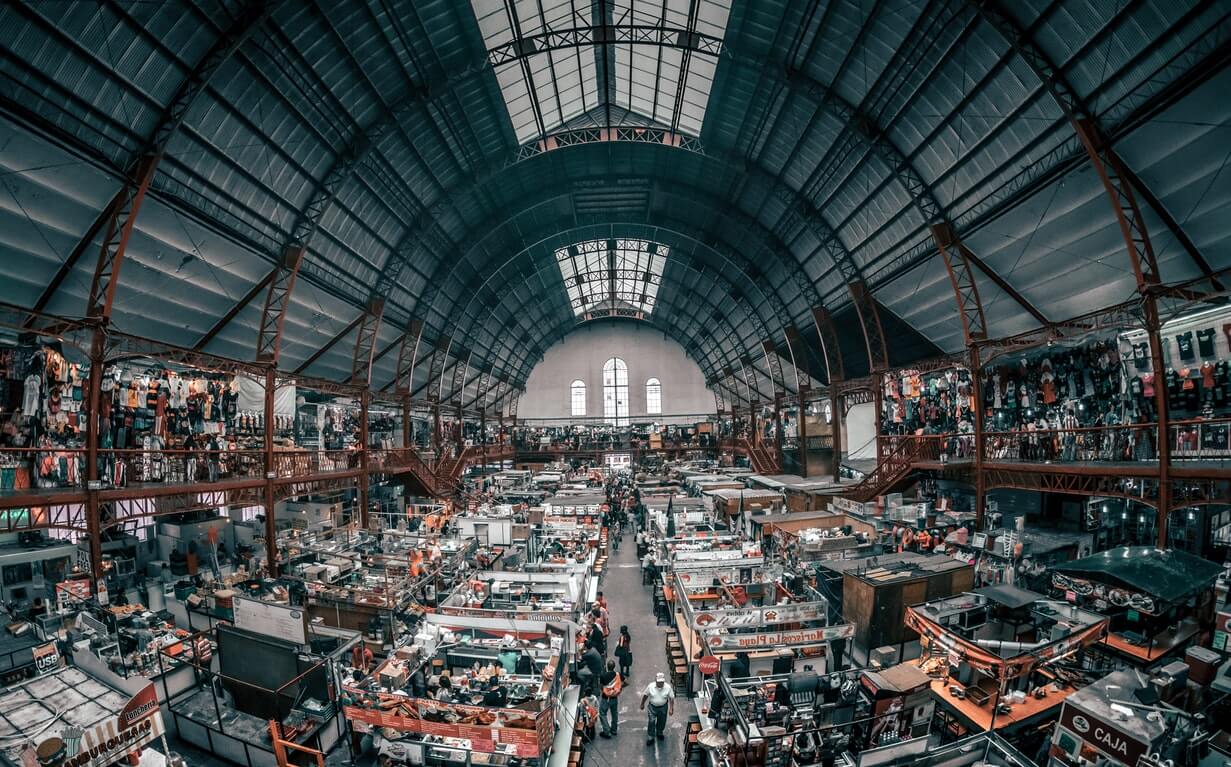Maintenance Tips & Failure Prevention for Industrial Vacuum Pumps
The Importance of Maintenance in Industrial Vacuum Pumps
Industrial vacuum pumps are critical equipment for ensuring uninterrupted and efficient production lines. As a fundamental component of production processes, any failure or performance drop in these pumps can halt the entire line. Therefore, establishing regular and effective maintenance programs not only preserves pump health but also guarantees production continuity and efficiency.
Maintenance processes should be tailored to the pump’s operating conditions and applied periodically. Pumps operating in harsh environments (dusty, corrosive gases, or high temperatures) require more frequent and detailed maintenance. Maintenance activities prevent wear on mechanical components, extending the pump’s lifespan. Proper maintenance maximizes pump efficiency and optimizes energy consumption.
Minor issues in pumps can escalate into major failures if not addressed promptly. Thus, maintenance teams must be experienced and trained. Regular maintenance and inspections minimize unexpected failures, reducing production downtime. Documenting all maintenance activities provides data for future issues and enhances maintenance quality.
Continuous Monitoring of Pump Performance
Regular monitoring of pump performance is one of the most critical factors in enhancing maintenance program effectiveness. Parameters such as vacuum level, motor current, airflow, pressure values, and operating temperature provide essential insights into pump health. Even minor deviations in these parameters can indicate potential issues.
Today, industrial facilities use sensors and IoT technologies integrated into vacuum pumps for real-time data collection and analysis. This data is monitored through a central control system, generating performance trends and automatic alerts for anomalies. This allows maintenance teams to intervene before a pump fails.
Detailed analysis of performance data enables the determination of optimal maintenance schedules based on operating conditions. For instance, sudden increases in energy consumption may indicate friction or lubrication issues. Early intervention in such cases prevents costly repairs and extends pump lifespan.
Cleaning Procedures and Filter Maintenance
Accumulation of dust, dirt, and particles in the internal mechanisms and filters of vacuum pumps significantly impacts performance. These build-ups cause a drop in vacuum power, component wear, and increased energy consumption. Regular cleaning procedures enhance pump efficiency and reduce maintenance costs.
The frequency of filter maintenance and replacement depends on the pump’s operating environment. In dusty or dirty conditions, filters must be regularly inspected and replaced as needed. Clogged filters restrict airflow, causing motor overheating and potential pump failures.
Some vacuum systems feature multi-layered filtration. In such cases, each filter layer requires cleaning or replacement. Appropriate cleaning materials and methods must be used to avoid damaging pump components. Neglecting filter maintenance increases pump downtime and disrupts production.

Lubrication Management and Seal Checks
An effective lubrication system is essential for the smooth operation of moving parts in vacuum pumps. The quality, suitability, and cleanliness of the oil directly affect pump performance. Inadequate lubrication increases friction, leading to wear and damage. It also causes overheating and mechanical failures.
Using manufacturer-recommended oil types and regularly checking oil levels are critical. Adhering to oil change intervals maintains high pump efficiency. Using incorrect or low-quality oil can cause foaming, corrosion, and seal wear.
Regular inspection of sealing components is vital for pump health. Worn seals or gaskets result in vacuum loss and reduced performance. Timely replacement of these components ensures pump efficiency.
Early Failure Detection with Temperature and Vibration Measurements
Pump temperature and vibration levels are key indicators of pump health. Abnormal temperature increases often signal lubrication issues, bearing failures, or blockages. High temperatures cause premature component wear and shorten pump lifespan.
Vibration measurements detect mechanical imbalances, loose connections, or component wear. Vibrations exceeding normal levels are early warnings of potential failures. Modern sensor technology enables real-time monitoring and reporting of these data.
Regular temperature and vibration tracking prevent unexpected failures, ensuring production continuity. Early intervention reduces maintenance costs and maintains high pump performance.
Analysis of Failure Symptoms and Intervention Methods
Most failures in industrial vacuum pumps manifest through symptoms. Unusual noises, vacuum loss, increased energy consumption, oil degradation, and rising vibrations indicate issues within the pump.
Early detection and accurate diagnosis of these symptoms can prevent major failures. Training operators to recognize these symptoms and conduct regular observations enables swift maintenance team responses. Failure histories and maintenance records guide analysis.
Intervention methods vary by issue type. In some cases, component replacement suffices, while severe failures may require comprehensive repairs or pump replacement. Timely and accurate intervention minimizes production interruptions.
Spare Part Selection, Storage, and Inventory Management
The quality of spare parts used in maintenance directly impacts pump performance and durability. Manufacturer-approved parts should be used to avoid low-quality or incompatible components, which can cause damage or early failures.
Spare part inventory management is critical to preventing maintenance delays. Keeping critical components in stock ensures rapid response to faults. Inventory levels should be optimized based on maintenance schedules and production needs.
Storage conditions are vital for durability. Parts stored in humid, dusty, or extreme temperature environments can be damaged. Proper storage extends part lifespan and preserves pump performance.
Operator Training, Proper Usage, and Proactive Maintenance
The longevity and efficiency of vacuum pumps depend on operator expertise. Improper use leads to component wear, increased energy consumption, and frequent failures. Comprehensive operator training on pump operation, maintenance needs, and failure symptoms is essential.
Regular training programs keep operators’ technical knowledge current and instill proper usage habits. Hands-on training ensures optimal pump operation. Trained operators can detect issues early and notify maintenance teams promptly.
Proactive maintenance involves scheduled maintenance and monitoring to ensure continuous pump health, rather than reacting only to failures. This approach ensures production continuity and reduces maintenance costs.
Digitalization of Maintenance with Modern Technologies
Advancing technology has made vacuum pump maintenance more effective and efficient. IoT sensors, cloud-based data analytics, and AI-supported maintenance software enable real-time monitoring of pumps.
These systems analyze performance data to predict failure risks in advance. Automated alerts and maintenance recommendations enable faster and more accurate interventions. Digital maintenance records simplify historical data review and optimize maintenance planning.
Investments in technological infrastructure extend pump lifespan, reduce production costs, and enhance operational efficiency.
Keeping Maintenance Records and Process Optimization
Every maintenance activity must be meticulously recorded. Details of maintenance type, replaced parts, observations, and recommended actions should be included. Robust maintenance records facilitate analysis of past issues and prevent recurrence.
Continuously reviewing and optimizing maintenance processes improves pump performance. Adopting a continuous improvement approach enhances maintenance effectiveness, reducing failures and increasing production continuity.
Regular reports and analyses update maintenance strategies, controlling costs and maintaining pump health at optimal levels.


